

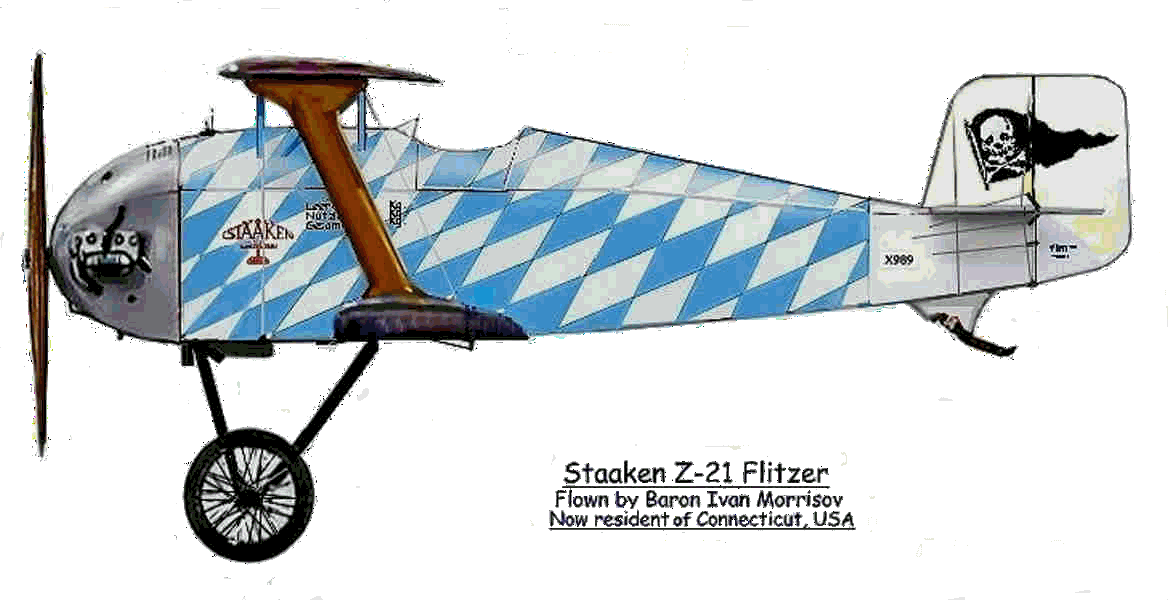
 |
1 | 2 |  | |
April 29, 2008 - Celebration!
The Connecticut Flitzer Werke today celebrated the pre-cover inspection by my EAA Technical Counsellor, paving the way for the next chapter in resurrecting the Morrisov machine.
Prost! - Baron Morrisov
Connecticut Flitzer Werke

June 16, 2008 - Baron Morrisov's fabric work
Group,
Here's a picture of the neat fabric work around the Connecticut Flitzerwerke Z-21 cockpit.
Lynn
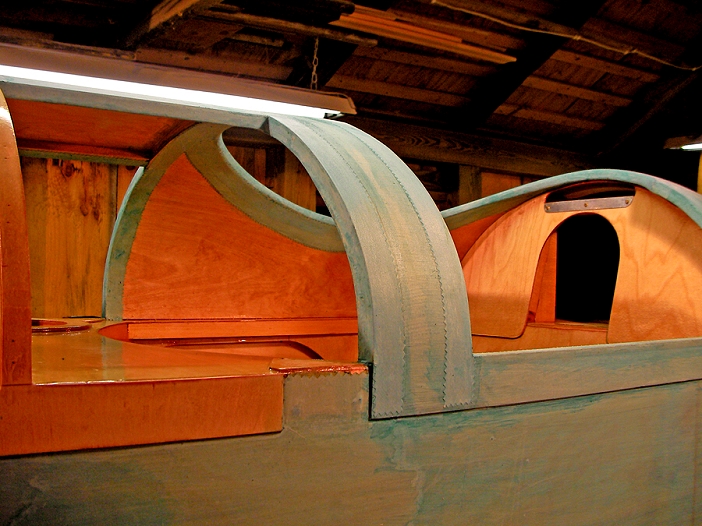 |
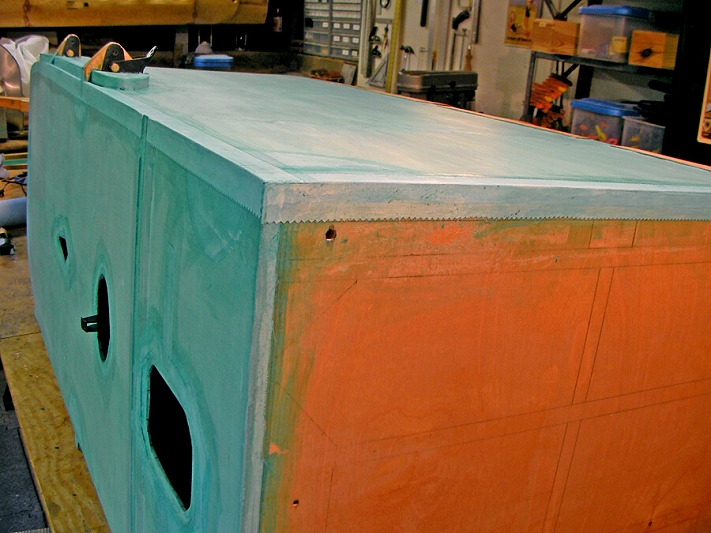 |
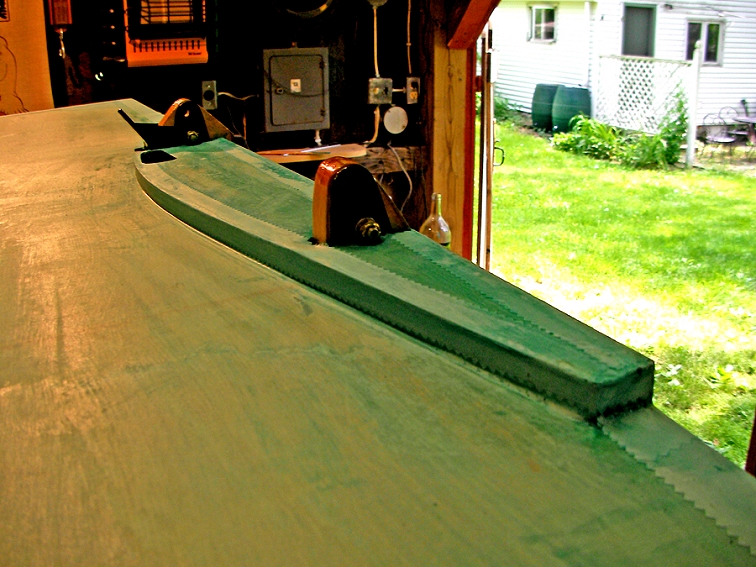 Last one of the Connecticut Flitzerwerke fabric work pictures for now. |
All looking nice. Is that ceconite? I assume that's why it has the green/blue tinge.
Cheers,
Mark
Hi Mark - yes, it is ceconite. But the reason it is that color is because of the glue. I am using the Stewart System (now STC'd) which uses water-based adhesive and filler and water-borne paints. There are many advantages, including clean-up with water, and a glue that one doesn't have to race.
http://www.stewartsystems.aero/
No more sniffing the dope!
Cheers - John
June 24, 2008 - Ready for Spraying
Group,
Here's Baron Ivan Morrisov's immaculate Connecticut Flitzer fuselage covered and ready for spraying.
Can't wait to see it in its Bavarian lozenges!
Lynn
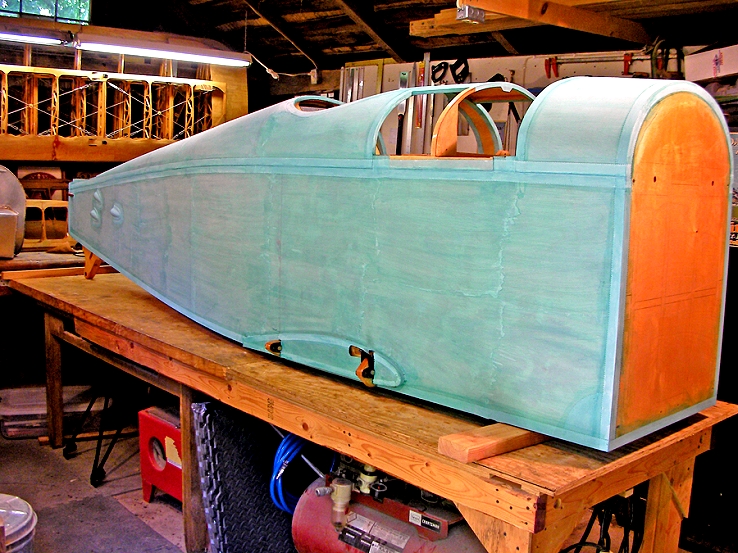
July 4, 2008 - Morrisov Z-21A fuselage primed
Group,
Here's the latest picture from Baron Morrisov in Connecticut showing the primed fuselage ready for the blue/white Bavarian lozenge scheme. It looks so perfect it's almost a shame to break it up with coloured shapes. The dark 5-lozenge camouflage wing fabric will contrast beautifully with this however as will the white tailgroup and black crossed-bones of the Imperial Death or Glory Escadrille as borne by Kazakov's machine. (Kazakov used to tear enemy aircraft apart in WW1 by towing a marine anchor beneath his Morane.)
Super Ivan. It's going to be a stunning aeroplane.
Lynn
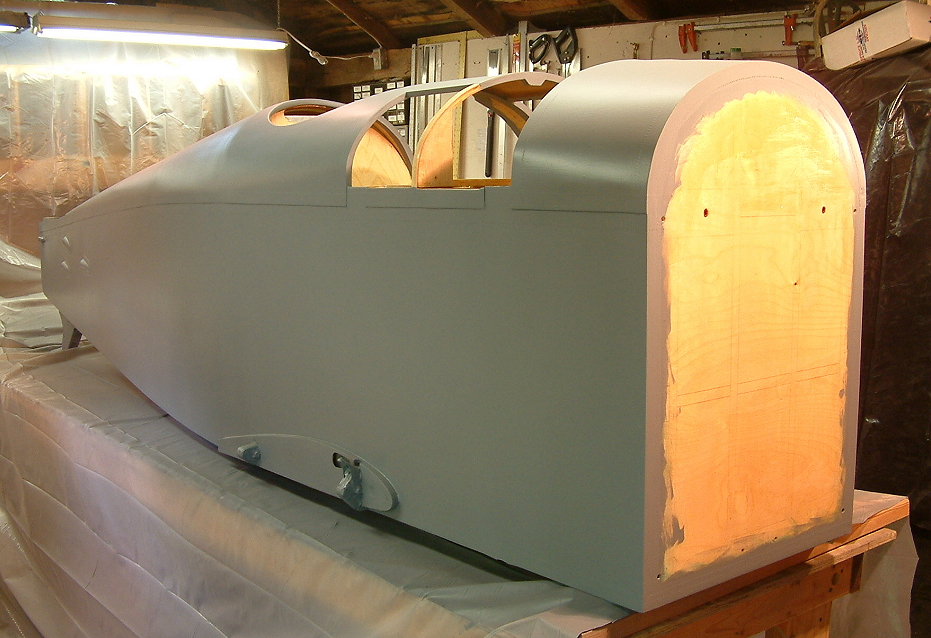
August 8, 2008 - Progress methinks
Hi Peter - attached are a couple of pics of the upper wing root ends after cutting and filing to allow the cabane to fit.
However, I should point out that if the cabane diagonals are lowered where they join the truss at the top rear, and if they are welded to the inside of the truss at the top cluster instead of straight onto the downtubes, there should not be a clearance issue in the first place.
Prost! - Morrisov
Connecticut Flitzer Werke
 |
 |
 |
August 13, 2008 - Morrisov Z-21A fuselage primed
Wednesday was a nice day for an outing (and to clean out the Flitzer Werke).
The grey is the Stewart Systems UV blocker/fabric sealer.
What a shame to cover up the woodwork, the Baroness said, but I want to fly it so there's no choice. I told her I would build another Flitzer to leave uncovered as a work of art for the living room. There is, she says, some practicality in putting on fabric and we really don't need one for static display.
Prost! - Morrisov
Connecticut Flitzer Werke
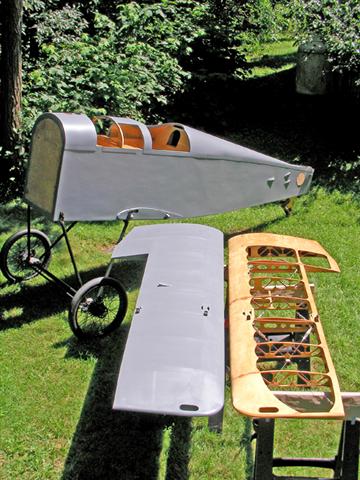
June 2, 2009 - AeroVee with ceramic exhausts
Group,
Here's the latest from the Baronial Estate in Connecticut.
The picture shows Ivan Morrisov's ceramic-coated exhausts and the Wasey-type heater muff on the AeroVee in its firewall-forward jig mount with the Z-21 fuselage beyond, parked among the trees, with the Bavarian flag flying. The elegant simplicity of the basic fuselage is well illustrated in this side view in the flat-grey Stewart Systems finish, just demanding its colour scheme.
A very nice picture I'm sure you'll agree.
Lynn
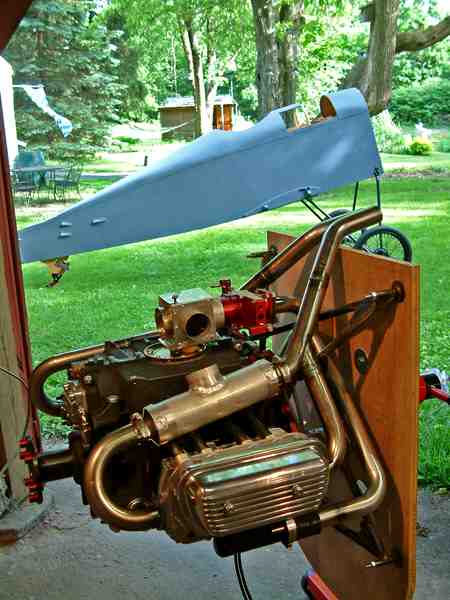
August 12, 2009 - Lozenge wing patterns
Group,
Here are the first official pictures of Baron Ivan Morrisov's Flitzer Z-21 no. 1 wing panel in Connecticut, photographed out of doors.
The lozenges required many masks to accomplish and the exercise was time-consuming, but I think you might agree the results are worthwhile. The lozenges represent the fact that immediately post-WW1 several aeroplanes, often light types - as these weren't prohibited to be built under the terms of the Versailles Diktat - were covered with wartime stocks of lozenge-camouflaged dyed fabric since this material was still available in large quantities. The effects were quite pretty, if somewhat warlike when applied to light sporting types, but are nonetheless authentic for the period.
During WW1, the variation between the lower surface and upper surface lozenges varied as to shade, as part of the disruptive camouflage effect that the industry was trying to achieve appropriate to either land or sky. The effect here, however, suggests a single-wrap of upper surface colour only applied to both surfaces, since a 'theoretical manufacturer' would only be interested in the cheapest way of covering his product, not whether it blended with sky or the German landscape. The four colours chosen are those typical of a night bomber fabric, rather than a lighter-toned day fabric, simply because they will contrast better with the chosen fuselage scheme of Bavarian 'diamonds' in blue and white.
The open panel in the wing undersurface is for aileron pulley-access and will be covered with a hinged 'Albatros' type engine-turned access panel, based on Ivan's meticulous examination of period types.
I can hardly wait to see the final assembly.
Lynn
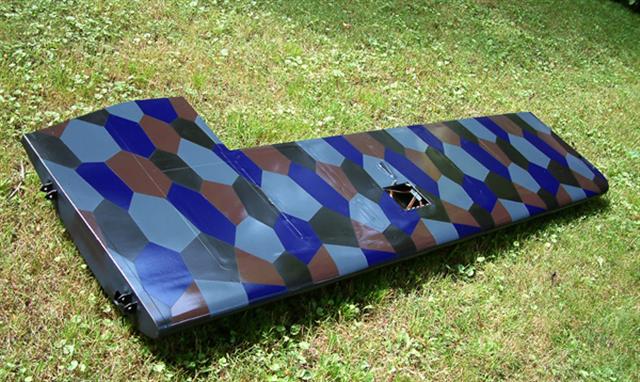 |
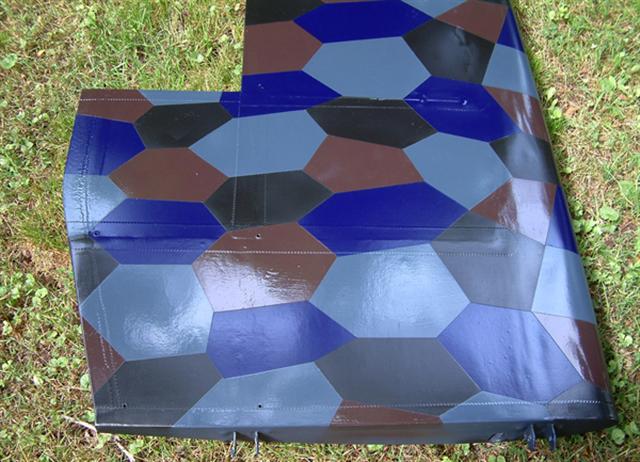 |
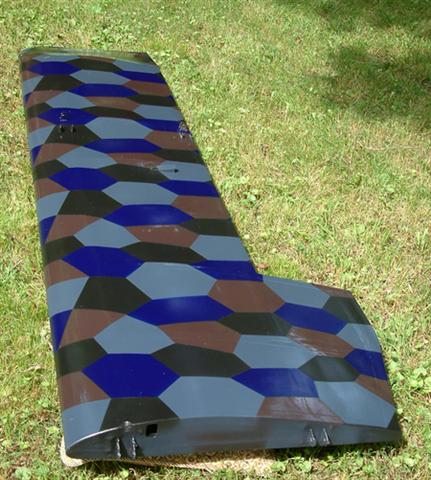 |
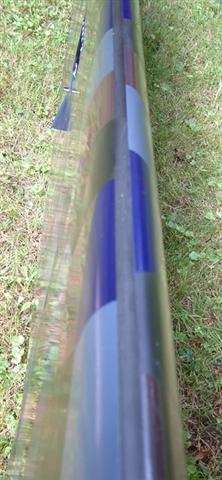 |
August 27, 2009 - More Lozenges
Group,
Just look at these two super wing panels which Baron Ivan Morrisov has just finished for his Z-21. They look even more impressive as a pair with more of the repeating Nachtbomber lozenge pattern viewable. These are a must for the Berlin Luftzirkus Goblin - when I get my finger out.
What a marathon, Ivan, but so worth it! I am trying to imagine the entire aeroplane assembled with the Bavarian blue-white diamonds and the polished bullet cowl.
Very well done indeed Ivan!
Lynn
 |
 |
 |
1 | 2 |  | |